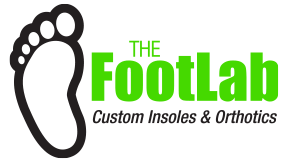What Is Barefoot Running?

The common misconception about the term “barefoot running” is that it means running in bare feet! It doesn’t. Barefoot running is about the stride, not the lack of footwear. The principle advantage of Barefoot running is that the impact between the foot and the ground is cushioned with a slightly bent knee and more flexible ankle joint. Therefore the impact shock typically felt at the heel, knee and lower back is significantly diminished.
I can attest to the fact that fact personally. At 210 lbs. running for me was like taking a three times a week beating by the Viking defensive line. Barefoot running has changed that. By adopting the Barefoot technique I am now much, much more comfortable at longer distances without any knee or lower back pain.
Traditional running and running shoes have developed to accommodate a style that is most similar to an elongated walking gait. The walking gait starts with heel impact at the outside rear portion of the heel. Pressure moves to the fifth metatarsal head (behind the little toe). It transfers across the ball of the foot to the first metatarsal head and rolls off the great toe. This “Z” shaped gait cycle has driven running footwear designs for decades.
Barefoot running is characterized by a shorter stride with initial impact occurring at the midfoot rather than the heel. Accordingly, Barefoot running footwear is typically designed with shorter heels and more padding or support at the ball of the foot.
It’s important to realize that many of the proponents of Barefoot Running have neutral or supinated feet. This foot shape is characterized by a higher more stable arch. When this foot shape runs using a Barefoot technique the impact is across the entire ball of the foot.
Unfortunately for most of us, 70% of the human population pronates on impact. This means that the foot rolls or collapses to the inside when weighted. For this type of foot, a Barefoot Running style means primary impact will occur at the first through third metatarsal heads and will likely lead to problems. For this foot shape it is absolutely critical to have proper foot support within the shoe.
The FootLab specializes in custom running orthotics for all styles of runners
Barefoot runners, like traditional runners are best served by custom running orthotics. This will insure that impact pressure is more evenly spread across the metatarsal heads, knee alignment stays true and the possibility of lower back pain is minimized.
Schedule your FREE foot evaluation
You’ll learn and see how your feet, knees, hips and back will benefit from custom molded shoe inserts. Use our online scheduler, or call 651-429-3333 to ask questions or schedule your appointment.
